

Silk-screen printing, also known simply as screen printing, is a popular method used in the cosmetic industry to decorate various packaging materials. It involves transferring ink onto a substrate through a mesh screen, which allows for precise designs, vibrant colors, and durability. This technique can be used on various materials, such as , plastic, and metal, making it highly versatile for different packaging needs. Its ability to print on both flat and irregularly shaped surfaces makes it particularly well-suited for cosmetic packaging.
Cosmetic packaging materials range from sleek glass bottles and jars to functional plastic containers. Silk-screen printing is often the best choice for these materials due to its ability to produce high-resolution, long-lasting prints that can withstand daily use and handling.
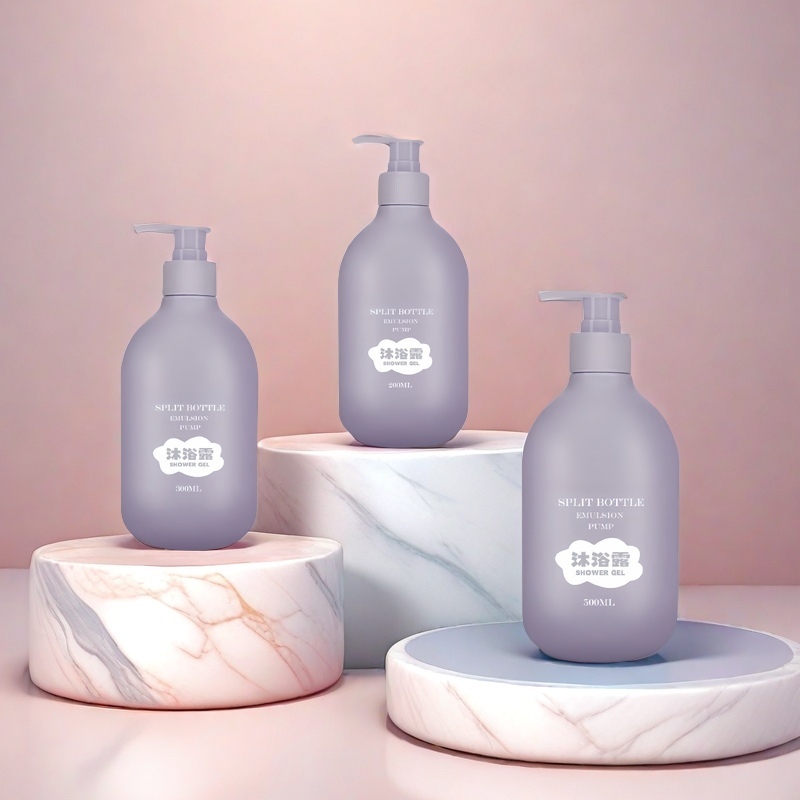
Artwork is an essential component of the silk-screen printing process. To ensure a smooth printing operation and a high-quality final product, the artwork must be prepared with precision.
The first step in preparing artwork for silk-screen printing is ensuring that the files are in the appropriate format. Vector-based artwork files are required for silk-screen printing because they can be scaled without losing quality. Common acceptable formats include:
Adobe Illustrator (.ai): One of the most popular formats, ideal for vector artwork.
EPS (Encapsulated PostScript): A versatile format that can handle both vector and raster data.
PDF (Portable Document Format): A widely used format that can preserve the layout and fonts.
Raster images (e.g., JPEG, PNG) are generally not suitable for printing as-is because they lose resolution when resized. However, these images can be converted into vector formats by a skilled designer to ensure compatibility with the printing process.
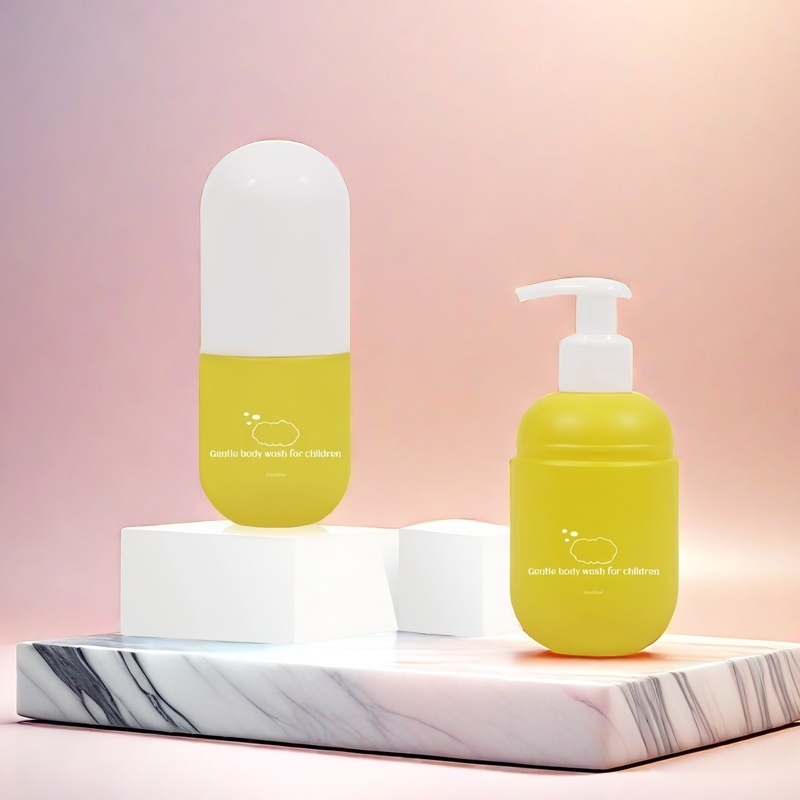
While submitting press-ready artwork is crucial, sometimes minor adjustments are necessary to ensure optimal results. Our design team will evaluate the artwork for issues like color consistency, clarity, and alignment. These minor tweaks can greatly improve the print’s final appearance and performance.
The choice of material is one of the most important factors in determining the success of the silk-screen printing process. Different packaging materials have unique properties that can influence the way ink adheres to them. Below, we explore the common cosmetic packaging materials, along with their advantages, disadvantages, and pre-treatment requirements.
Several materials are commonly used in cosmetic packaging, including:
PET (Polyethylene Terephthalate): PET is a widely used material in cosmetic packaging because of its clarity, strength, and recyclability. It requires no pre-treatment for silk-screen printing and is compatible with most cosmetic products, making it an excellent choice for bottles and jars.
HDPE (High-Density Polyethylene): HDPE is a flexible, opaque plastic that is commonly used for personal care products. It is durable, but it requires flame treatment to ensure good adhesion of ink. This pre-treatment is essential, as HDPE containers without flame treatment can lead to poor print quality.
PVC (Polyvinyl Chloride): PVC is used for bottles and other containers. It is a very printable material, but it may have higher reject rates because misprints cannot be recovered. It is suitable for products that require strong, detailed prints.
PP (Polypropylene): Often used for rigid jars and cosmetic tubs, PP requires flame treatment only if the product inside the container is oily or contains solvents, such as alcohol or essential oils. Without flame treatment, ink adhesion can be problematic.
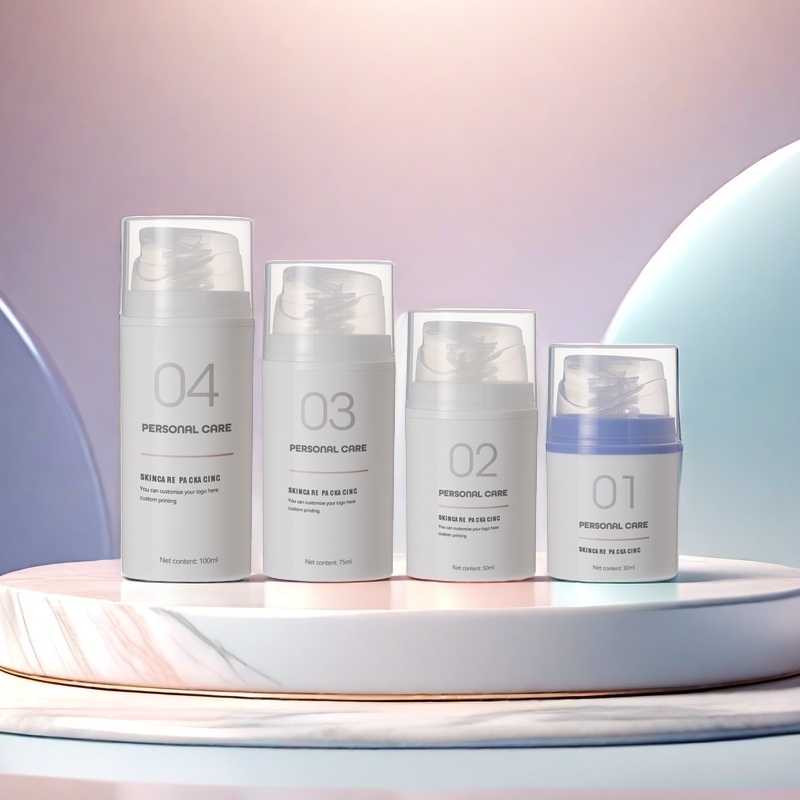
Some materials, such as HDPE, LDPE, and PP, require flame treatment to alter their molecular structure. This treatment allows the ink to bond properly with the material's surface, ensuring long-lasting prints. Flame treatment is typically done at the factory, but testing the material’s printability before mass production is highly recommended.
Testing Ink Adhesion: Before proceeding with large batches, it is essential to test the ink adhesion. If the flame treatment is insufficient or if the container is not properly cleaned, it can result in adhesion failures, causing the print to peel off or fade prematurely.
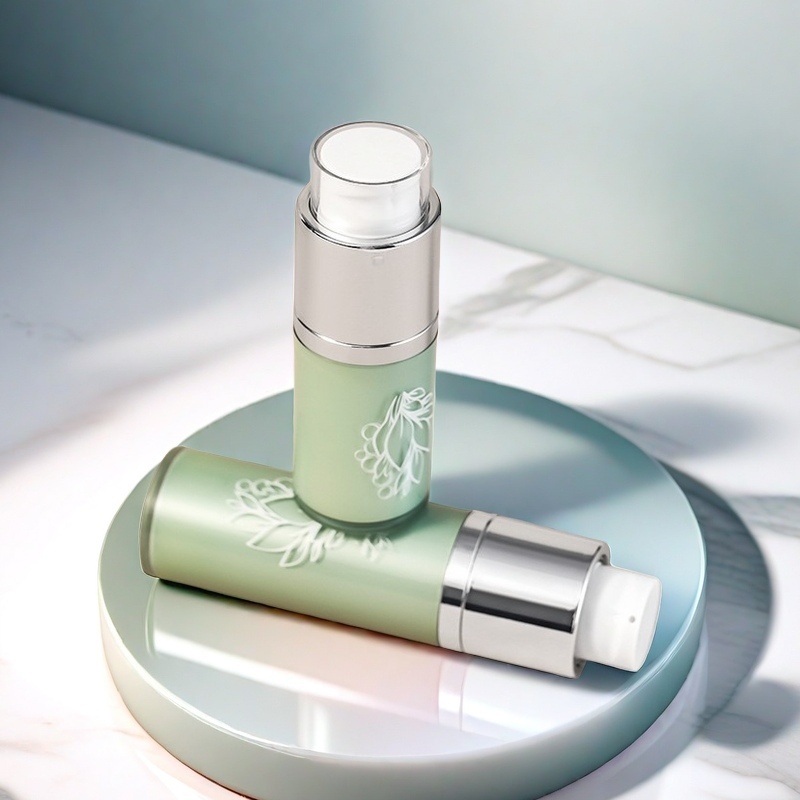
With growing consumer demand for sustainable products, the cosmetics industry is increasingly turning to eco-friendly packaging solutions. Materials like recycled PET (rPET), glass, and biodegradable plastics offer more sustainable alternatives to traditional plastics. These materials not only reduce environmental impact but can also be printed using the same silk-screen techniques, offering high-quality and durable designs.
Glass: Glass is a premium material in cosmetic packaging and is 100% recyclable. Silk-screen printing on glass is highly effective, though the surface must be clean and free of contaminants. Glass containers are perfect for high-end cosmetic brands and offer an eco-friendly solution for consumers.
Recycled Plastics: rPET is made from post-consumer plastic waste and is an increasingly popular choice for environmentally conscious brands. rPET can be used for cosmetic packaging, providing the same benefits as virgin PET, but with a lower environmental footprint.
Biodegradable Plastics: While biodegradable plastics are still an emerging solution in the packaging industry, they represent a promising avenue for more sustainable packaging options. These materials decompose more easily than traditional plastics, reducing their impact on the environment.
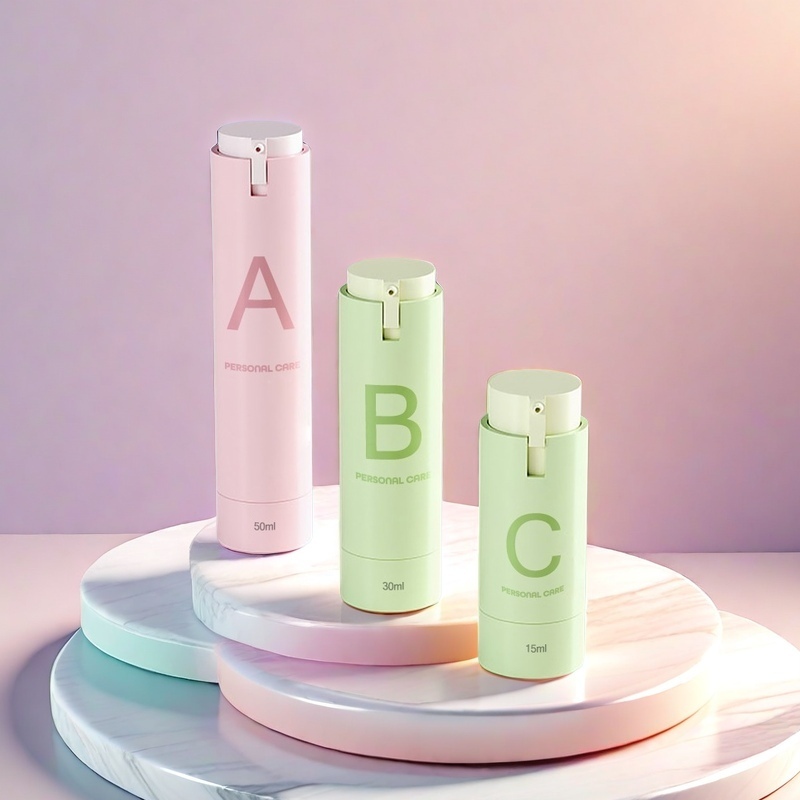
One of the key advantages of silk-screen printing is its ability to be applied to a wide range of container shapes and sizes. Whether you need to print on a small bottle or a large skincare jar, silk-screen printing offers flexibility and versatility.
Our silk-screen printing services can accommodate containers ranging from as small as 3/8 inch to as large as 12 inches in diameter. The maximum print height on our equipment is 8 inches. This wide range of sizes allows for diverse cosmetic packaging designs, from intricate, small-scale prints to larger, bold designs.
Silk-screen printing can be applied to many container types, including:
Cylindrical containers
Tapered shapes
Ovals
Flat surfaces
The ability to print on irregular shapes, such as tapered or oval bottles, makes silk-screen printing an excellent choice for a variety of cosmetic packaging.
Flame treatment is a necessary step for certain plastics like HDPE and PP. It alters the molecular structure of the plastic surface, allowing for better adhesion of ink.
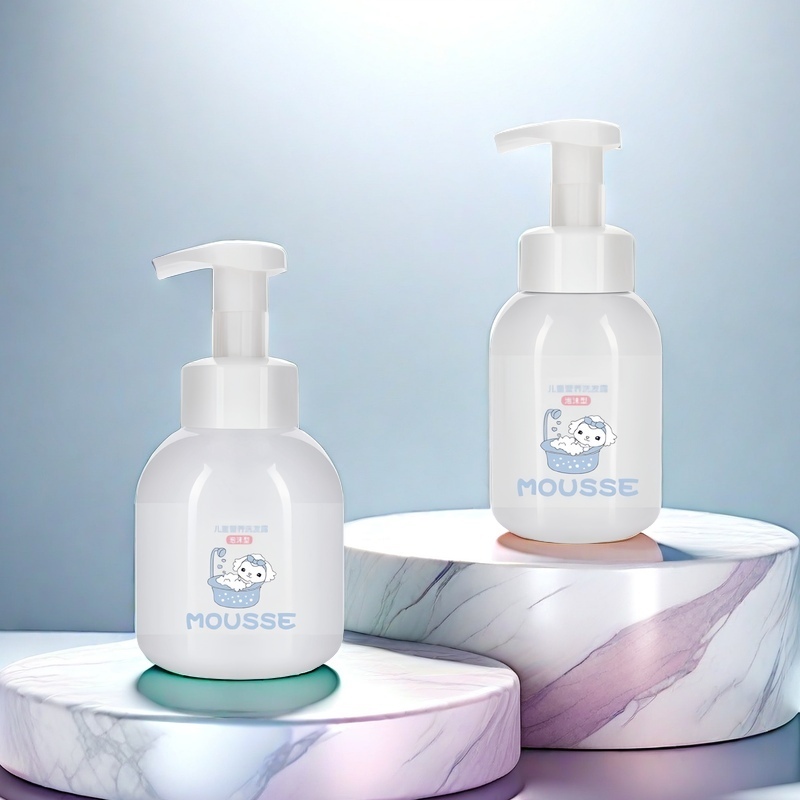
Flame treatment ensures that ink adheres properly to the plastic surface, resulting in long-lasting prints that can withstand the rigors of handling and daily use. This step is crucial for high-quality prints, especially for containers that will be exposed to oils, alcohol, or solvents.
Before mass production begins, it is recommended to test the flame treatment process on the containers to ensure adequate ink adhesion. This test is essential to avoid any potential issues with print durability.
Before starting full production, it is critical to review pre-production samples to ensure that the design, colors, and print quality meet expectations.
Artwork proofs allow you to check the placement and overall design on the actual container. This step ensures that the design is aligned correctly and that the final print will match your vision.
Sample production requires at least 12 items to fine-tune the press and achieve optimal results. If modifications are made to the design after the samples are approved, additional charges may apply.
When you supply your own containers for silk-screen printing, proper handling is crucial to ensuring the success of the process.
To ensure successful ink adhesion, containers should be clean and free of dust, oils, and other contaminants. Properly cleaning the surface before printing is essential for a high-quality, long-lasting print.
Non-standard or customer-provided containers that are not sourced from our approved suppliers may face ink adhesion challenges. In such cases, testing the compatibility of the ink with the container material is necessary to avoid printing issues.
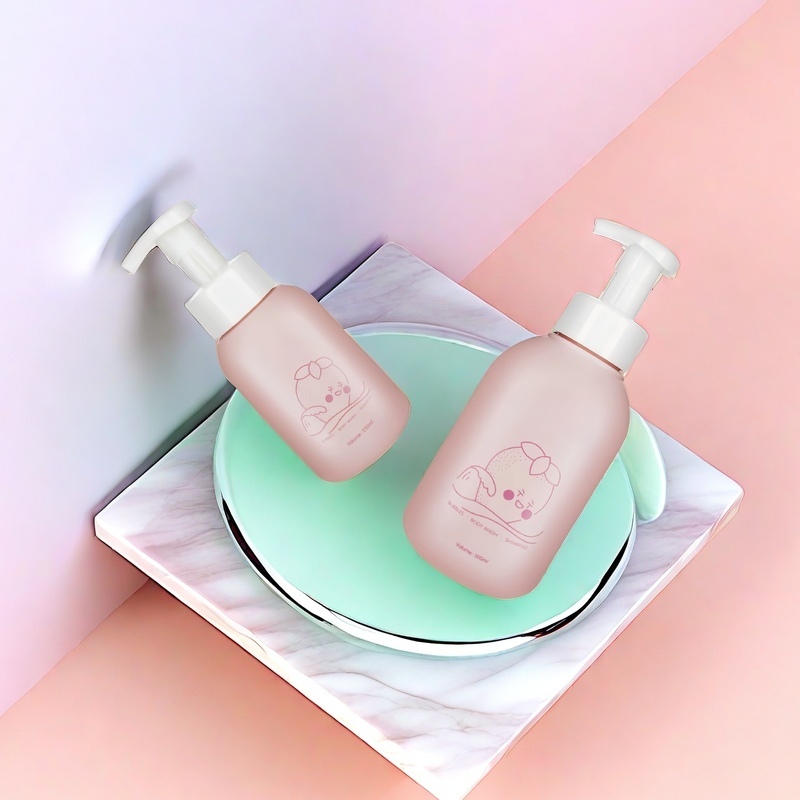
Durability: The ink used in silk-screen printing is resistant to fading and chipping, making it ideal for long-lasting packaging.
High-Quality Prints: Silk-screen printing can produce sharp, vibrant, and high-resolution designs, even on complex surfaces.
Versatility: This method can be applied to a wide range of packaging materials and shapes, including glass, plastic, and metal.
Cost-Effective for Larger Runs: Silk-screen printing is highly cost-effective when printing large quantities of products.
Limited Color Range: Unlike digital printing, silk-screen printing can be limited to specific colors, making it less suitable for complex designs with gradients or multiple colors.
Setup Costs: While it is cost-effective for large runs, the setup costs can be high for smaller batches, as screens need to be created for each design.
Silk-screen printing can be applied to various materials, including PET, PVC, HDPE, LDPE, PP, acrylic, and metal. However, some materials require pre-treatment (e.g., flame treatment) for optimal ink adhesion.
The maximum print diameter is 12 inches, and the maximum print height is 8 inches. We can accommodate a wide range of container sizes and shapes.
Containers must be clean, free from contaminants, and, if necessary, flame treated. We provide free testing to determine if your containers are compatible with silk-screen printing.
Artwork should be submitted in vector format (Adobe Illustrator, EPS, or PDF). We can assist with converting raster images to vector format if necessary.
Conclusion
Silk-screen printing is an integral process in the cosmetic packaging industry, offering both flexibility and durability. Whether you are working with glass, plastic, or sustainable packaging materials like rPET, this printing method allows for vibrant, long-lasting designs that enhance the appeal of your product. By understanding the various material considerations, artwork requirements, and pre-treatment processes, you can ensure that your packaging not only meets aesthetic goals but also stands up to the demands of consumers in an eco-conscious market.





